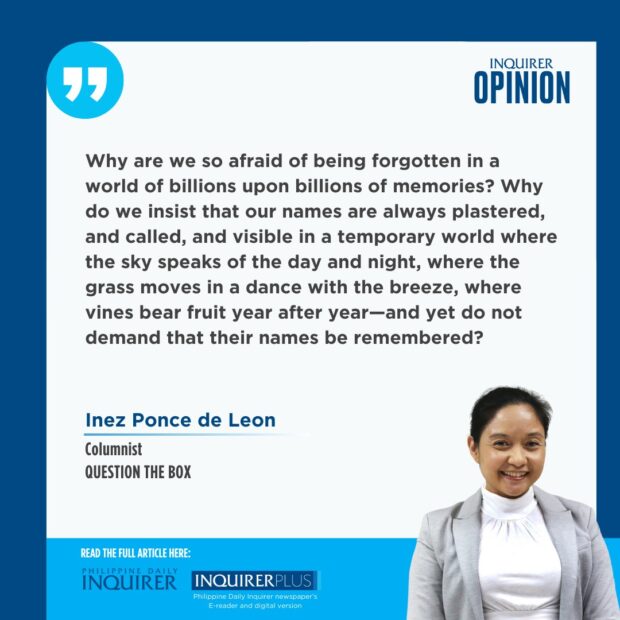Nameless legacies and prayerful art

A few weeks ago, Fr. Sigmund “Munching” de Guzman, SJ, asked me to collaborate with him on his exhibit.
I’ve already featured Father Munching in this column. He’s a watercolor artist who infuses his paintings with prayer, and he was my facilitator last year at our silent retreat in Mirador House, Baguio.
Back then, Father Munching had merely been toying with the idea of an exhibit. This year, he received an invitation from the John J. Carroll, SJ, Institute on Church and Social Issues (ICSI), which is celebrating its 40th anniversary.
Article continues after this advertisementICSI works to empower local leaders to develop communities. For its anniversary, ICSI would exhibit Father Munching’s paintings and sell them, with proceeds going to ICSI’s projects.
His idea was to have me write reflections for each of his 15 paintings that were up for sale. Father Munching’s work is pretty and bright; but when he explains his process, the light watercolors gain profundity and depth.
He talked about his paintings and the breadth of concepts that they represented. He reminded me to write about issues that people might forget in their daily rush: social justice, helping the poor, our temporary sufferings, our eternal happiness.
Article continues after this advertisementI wrote the reflections, and they became part of the pre-exhibit catalog sent to prospective buyers.
The very last painting to be sold was called “The Mortality of All Things.”
It shows a rusty truck, on a field of pumpkins spilling across green grass, standing against a misty blue sky. It represented the desired, impermanent things of the world, Father Munching had told me.
I wrote a reflection on our material desires becoming less beautiful, our wishes changing when our things grew old, our priceless legacies of family, friendship, and love being the only things we could leave behind.
Everything on earth was mortal, I said, and only our legacy is immortal.
Weeks later, the reflection reads as a frightening, if not morbid examination of mortality. Had it been the reason that the painting was the last one to find a home? Because the reflection had been so dire and permanent?
The thought came to mind as I watched a storm pour rain onto a gray, sodden city. Buildings would crumble, certificates would fade, companies would disappear regardless of the names they had borne in their prime.
Like our cars and houses, even our ideas will one day be discredited. Our achievements will one day be judged inconsequential, while our nondescript creations can suddenly gain notoriety or fame.
So why are we so afraid of being forgotten?
Why do we work so hard to leave behind permanent things in an impermanent world?
In crafting the first reflection, I had reduced legacies to permanency, and material things to impermanence—and yet both of them could also be fleeting.
There were also things that I had neglected in the painting: the pumpkins, the grass, and the sky.
We often associate pumpkins with the Western world. They herald autumn, falling leaves, Halloween. Pumpkins also symbolize prosperity, a cycle of life and rebirth. Unlike a truck that has nowhere to go but stagnation and rust, pumpkins are in a constant cycle of life.
Like the blue sky and the green grass, pumpkins will exist even without us. Life will go on regardless of the nature of who or what we leave behind.
I have thought, since then, of an alternate reflection for the painting.
“Not everything that we wish for will last forever: the mansion will be pretty for only a few years before it falls apart; the diploma will be brand new only for a few months before it fades; the expensive truck will be shiny only for a few days before time (and accidents) reveal the way of all things.
“To destruction, to decay, to death.
“The world remains: skies of varying hues depending on the season, grass that grows green where the sun and earth meet the water, pumpkins that hold fruit for this year’s harvest and the seeds for next year’s plants.
“Why are we so afraid of being forgotten in a world of billions upon billions of memories?
“Why do we insist that our names are always plastered, and called, and visible in a temporary world where the sky speaks of the day and night, where the grass moves in a dance with the breeze, where vines bear fruit year after year—and yet do not demand that their names be remembered?
“Houses crumble, diplomas disappear, trucks will rust—the world will go on.
“That is a true legacy: the one that does not end in a house, or diploma, or a truck, but a kind heart that became a home for many, a diploma that represented the wisdom that would guide lost souls to greatness, a life of love that brought people from one dream to the next.
“A legacy is a memory that does not end with one’s name. A true legacy needs no label or name to commemorate it.
“And that, perhaps, is true immortality: when our names disappear with no need to be spoken again, but our spirits live forever even in hearts that have never seen our faces.”
Father Munching’s exhibit, “The Word in Art,” will be on Sept. 14, at the Joy Nostalg Hotel, Ortigas.
—————–
iponcedeleon@ateneo.edu
















